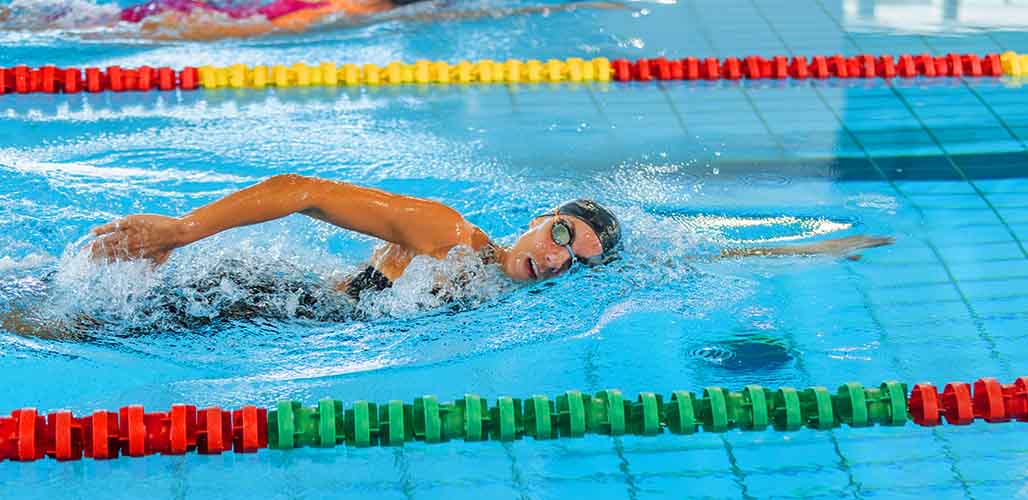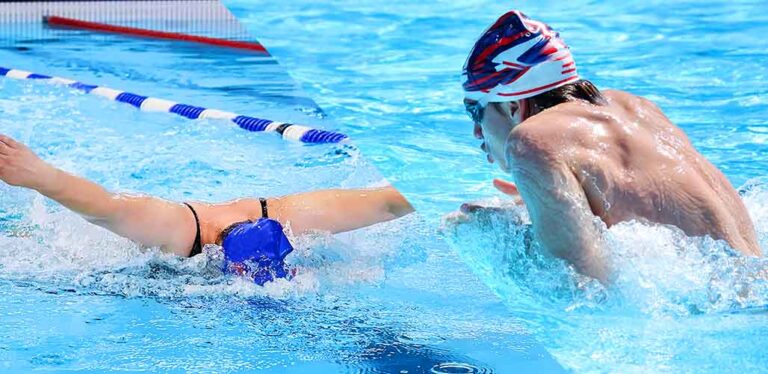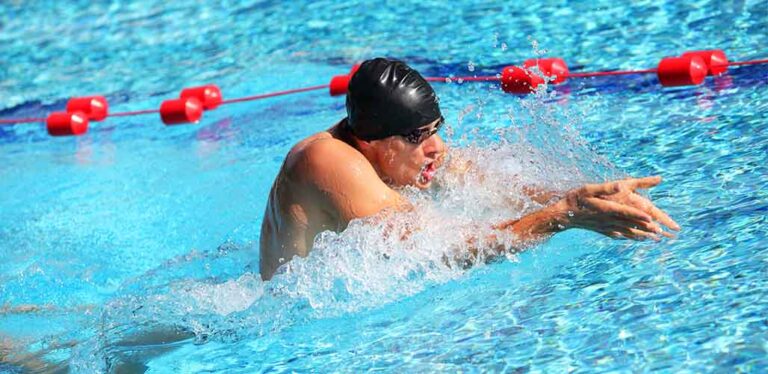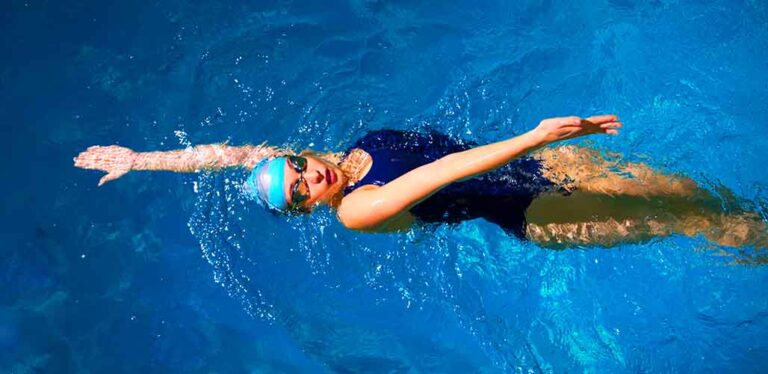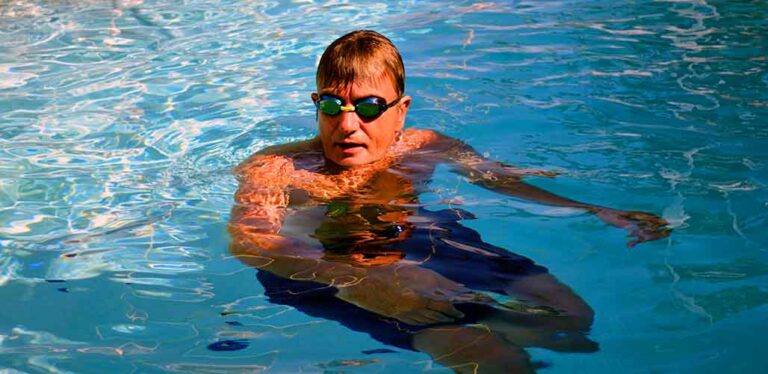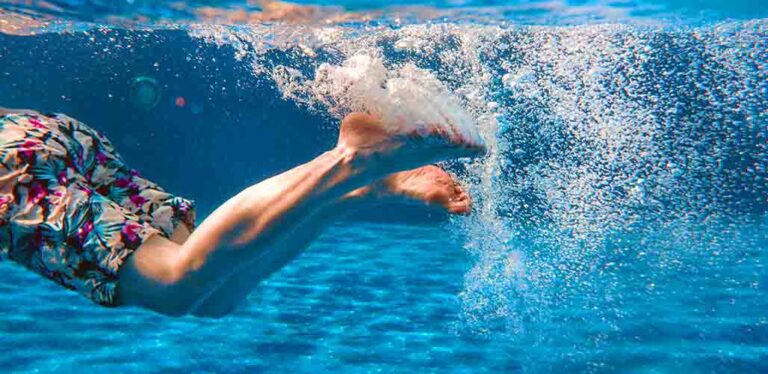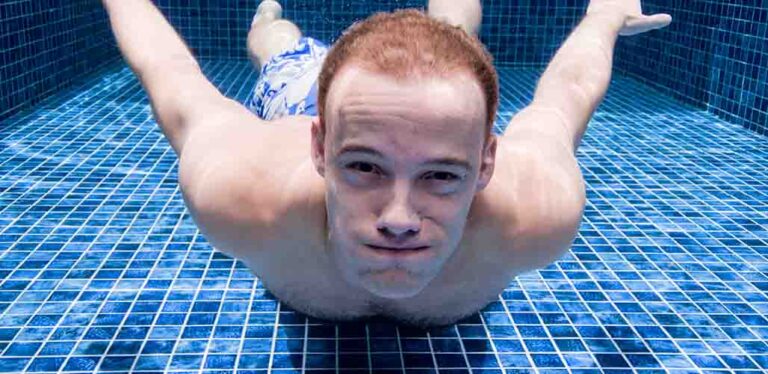How To Improve Your Front Crawl And Swim Like A Pro!
The front crawl stands as the poster child of swimming strokes. Its high efficiency makes it the faster of the four techniques, and it’s commonly chosen as the stroke of choice in freestyle races. Basic front crawl involves laying on your stomach in the water, and moving your arms overhead in a smooth and streamlined motion. But there is a lot you can do to improve your front crawl pull, kick and breathing techniques, taking it to the next level.
Contents
- Optimal streamlining
- Stability in the water
- Front crawl arms perfected
- Mastering the flutter kick
- Breathing techniques for front crawl
Whether you’re a novice embarking on your swim training or a seasoned pro looking to shave off precious tenths, this guide is meant for you. It delves into the nitty-gritty of the front crawl, highlighting critical aspects such as body alignment, stroke and kick mechanics, breathing techniques, and essential drills to fast-track your progress.
Improving Your Front Crawl Through Optimal Streamlining
Like every other stroke, the first fundamental of the front crawl is achieving an optimal streamlined position. Swimming is a constant battle against water resistance. The solution? A streamlined body position to help you glide effortlessly through the water.
A perfect streamline involves maintaining a flat and horizontal posture in the water. Imagine your body as a long, sleek vessel cutting through the water. Sounds simple. Yet, achieving and maintaining this streamlined position can be challenging.
Stability Begins with Core Strength
Core engagement is pivotal in achieving stability and maintaining a streamlined body position. A strong core helps control your body rotation, assists in a powerful stroke, and perhaps most important: keeps your legs from sinking.
Engaging your core while swimming can be as simple as drawing your belly button towards your spine. It might seem easy on dry land, but it takes practice to do it mid-stroke.
The key is building a solid core in the gym before you hit the water. Exercises that target your bas and lower back are the fundamentals for sound core stability that will help propel you through the water in the most efficient way possible.
Balance through Head Positioning
Your head position in the front crawl is another of the keys to body positioning. The rule of thumb here is to keep your head neutral, looking straight down towards the pool floor.
Over-arching or dropping your head disruptively affects your streamline, increases drag, and subsequently slows your speed. Simply put, the head leads and the body follows.
Aim to keep the water surface on the crown of your head and experiment. Some swimmers prefer a lower chin, while others look slightly in front. Make sure you try both solutions out and find your sweet spot, but remember to keep the neutral position as your north star.
The Power of Rotation
Finally, optimal body rotation is a key driving factor in front crawl. By rotating your torso side-to-side with each stroke, you can lengthen your reach, reduce drag, and add rotational force to your arm pull.
Keep your head still while your torso swings, remember however that over-rotation can disrupt your rhythm and balance, so strive to rotate only to the point that maximizes your arm reach.
Arms: The Motor of Front Crawl
Aside from breaststroke, swimming is mainly driven by arms. That’s where most of the propulsion will originate from. The front crawl is the best example of that.
Entry and Catch
The arm motion is a cycle, so let’s assume the entry is the first phase. The hand should stay relaxed and enter the water fingers first, slightly outside your shoulder line, extending forward. This is your entry.
The catch follows, where you bend your elbow, keeping your hand relaxed with fingers slightly spread apart, ready to pull. The anchor to the catch isn’t the hand, so remember to keep your forearm as one single segment and focus on the elbow.
Common mistakes:
The most common mistake in the entry and catch phase is trying to enter the water too far in front and ending up overreaching.
You overreach when your hand passes your shoulder line and enters in front of your head. This increases the drag and creates a dead spot in your pull where you’ll generate little to no propulsion.
Pull and Recovery
The pull is the part of the stroke where you propel yourself forward. Proper mechanics and continuous motion are essential in an efficient arm stroke, so let’s dive in.
Pull the water towards your body using your forearm and hand, maintaining the high elbow you set up in the catch. Once your hand passes your hip, pull your arm out of the water in a relaxed, high-elbow position. That’s what sets up the recovery.
For the airborne part of the stroke imagine you have a string pulling on your elbow and focus on that. As you begin the cycle with the opposite arm the recovery phase propels your hand toward the water surface for a new stroke to take place.
Common mistakes
Lowering the elbow during the pull is a fatal mistake that’s pretty recurrent in newbies. The high elbow is always the way to go.
Another classic blunder is extending the pull too far back beyond the hip. That ends up wasting energy and time in a not-so-propulsive motion. Keep the pull ‘big’ but effective.
The Flutter Kick
You know what they say: The legs feed the wolf.
While propulsion comes primarily from the arms, your legs are key in helping you maintain your body line. Additionally, having a strong kick will help you lighten the load on your upper body.
Because it provides stabilization and additional propulsion in the front crawl, developing your flutter kick should be at the top of your priorities list.
The flutter kick involves alternating up-and-down kicks. Remember though, the motion should start from the hip, not the knee. After you initiate the kick, your knee should bend slightly before you fully extend your leg all the way to your toes.
The flutter kick can come in two patterns:
- Six-beat kick – The most common where you kick six times with each arm stroke. A great overall choice but can be tiring over longer distances. Ian Thorpe was a master at this, check out some footage for inspiration!
- Two-beat kick – Long-distance swimmers often opt for this option. A two-beat kick helps you preserve energy while maintaining a longer stroke and rhythm. The perfect example would be Kate Ledecky, the distance queen, who uses this pattern for her longer races.
Common mistakes
An effective kick is more about maintaining rhythm and less about powerful, splashy kicks. A new swimmer might focus on the kick power when in fact one should try to ‘kick in a box’ and maintain a flow to it.
Another frequent mistake is bending your knee too much causing extra drag and less propulsion. If you’re having trouble with this, try to kick with a straight leg and progressively incorporate a knee bend. Over time you’ll notice the difference in effectiveness.
Breathing
One aspect that can’t be overlooked: the breathing pattern.
Proper breathing in freestyle is rhythmic and controlled, typically involving a breath every third stroke. Some sprinters prefer to breathe to one side only, every two or four strokes, but when you’re swimming laps, focus on breathing to both sides to avoid imbalances.
As your arm recovers and flies through the air, turn your head to the same side, keeping one eye submerged in the water.
Your breath should be quick and sharp, inhaling through your mouth. As your head returns to the water during the hand entry, exhale through your nose or mouth, fully releasing the breath by the time you’re ready for your next inhale.
Common mistakes
The most common one you’ll see is over-turning the head. That will increase drag, slow down the stroke, and throw off your balance. Aim to keep half of your face in the water at all times.
Another frequent blunder is waiting for the mouth to come out of the water to exhale. You should fully exhale underwater to minimize the time you spend with your head to the side. That will make a world’s difference since you want to spend the most amount of time aligned.
Essential Drills to Amp Up Your Front Crawl
To master your front crawl, practice and repetition are crucial. Here are some drills that will help you get better at everything we touched on.
Single Arm Drill
This drill focuses on refining your stroke mechanics. Swim with one arm extended out front and the other performing the stroke cycle. It allows you to concentrate on each phase of the stroke, and improve your technique and balance.
Zipper Drill
This drill emphasizes high-elbow recovery. Visualize zipping up your side with your fingertips as your arm recovers, ensuring you keep your elbow high.
Kicking on the Side
This drill improves body rotation and balance. Kick down the pool while lying on your side, one arm extended straight in front, the other by your side. This will make you focus on body alignment and help you develop an efficient breathing technique.
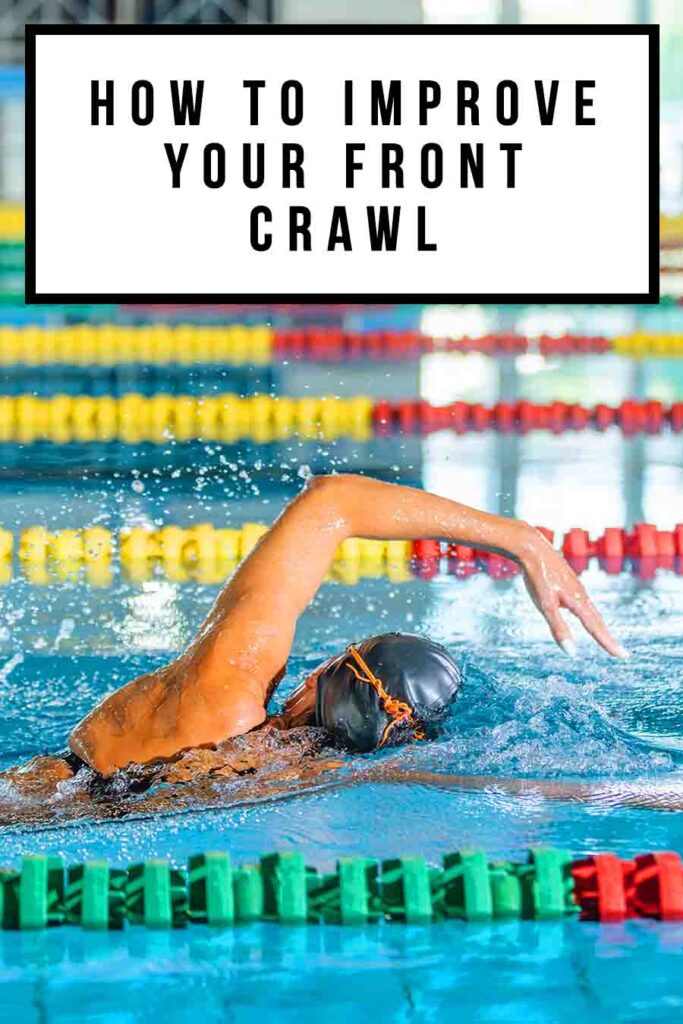
Improving Your Front Crawl
The good news is the front crawl has the steepest learning curve of all the strokes, but don’t stress if you don’t pick up all the details right away!
Stay consistent, keep practicing, and you’ll see yourself progress steadily toward a perfect front crawl.

